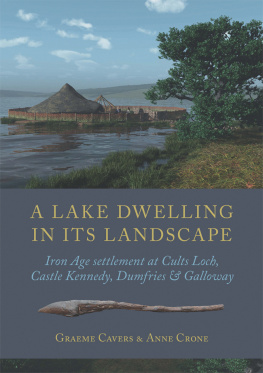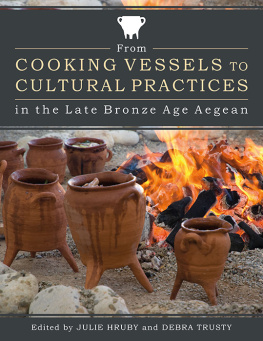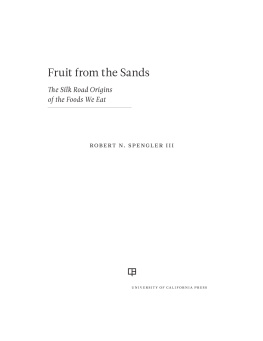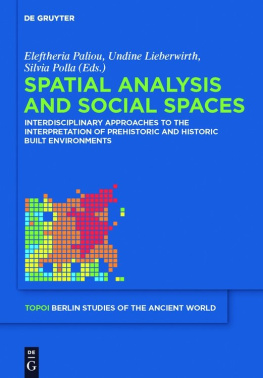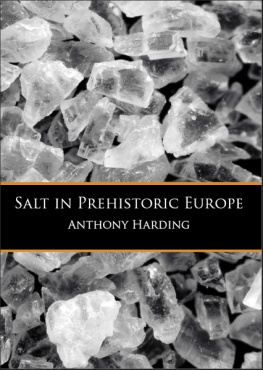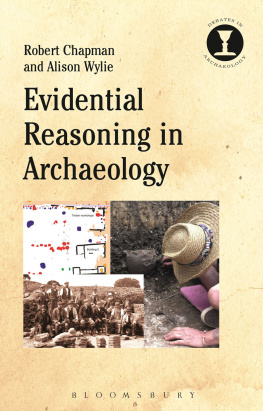i Prehistoric Woodworking ii
iii Prehistoric Woodworking
The Analysis and Interpretation of Bronze and Iron Age Toolmarks
Rob Sands
iv First published 1997 by Institute of Archaeology, University College London
Published 2016 by Routledge
2 Park Square, Milton Park, Abingdon, Oxon OX14 4RN
711 Third Avenue, New York, NY 10017, USA
Routledge is an imprint of the Taylor & Francis Group, an informa business
Institute of Archaeology, University College London
All rights reserved. No part of this book may be reprinted or reproduced or utilised in any form or by any electronic, mechanical, or other means, now known or hereafter invented, including photocopying and recording, or in any information storage or retrieval system, without permission in writing from the publishers.
Notice:
Product or corporate names may be trademarks or registered trademarks, and are used only for identification and explanation without intent to infringe.
Production by Archetype Publications.
Typeset by Kate Williams, London.
ISBN 13: 978-0-905853-34-5 (pbk)
ISSN 1369-6963 v vi
Contents
vii
As an undergraduate in 1988 I worked on the site of Oakbank Crannog, Loch Tay, Scotland and encountered for the first time the quality of organic preservation that could be found on a wetland site. Work on the Crannog also provided me with an opportunity to conduct a limited pilot study as part of an undergraduate research project. The project explored the possibility that the use of axes on the site could be traced across the worked timbers of the crannog. Tiny striation patterns left on the wood surfaces by points of damage in axe blade edges provided the means by which this could be achieved, a notion inspired by the work of John Coles and Bryony Orme in the Somerset Levels (e.g. Coles and Orme 1978a p.79). During the pilot study only six timbers were examined but they demonstrated that matches could be made in this fashion (Sands 1989). In 1991 I had the opportunity to examine additional wooden material from the Oakbank site and to explore issues of recording, matching and interpretation at a deeper level than had been possible during the pilot study. This formed the basis of my doctoral research at the University of Edinburgh, part of which forms the case study presented here.
This monograph concentrates on the techniques used to record signatures and their potential uses on sites with large amount of structural wood. The material from Oakbank Crannog is used to illustrate many of the points at a practical level but this is not intended as complete woodworking report for the site.
During these investigations a number of people have provided valuable support in a variety of ways. First I would like to thank Dr. Nick Dixon and Barrie Andrian for allowing me to examine material from the Oakbank site and for their advice at various stages. Special thanks should also given to the British Academy for providing three years of financial support.
A number of people have also provided equipment, assistance or financial support during my research: Patrick Ashmore for Historic Scotlands funding of Radicarbon dates; Patrick Cave-Brown for wood supplies and woodworking advice and assistance; Trevor Cowie (National Museum of Scotland) for advice on metal work and axe typology; Dr. A.J.Hayes (Institute of Ecology and Resource Management, University of Edinburgh) and Dr. R.F.Lyndon (Institute of Cell and Molecular Biology, University of Edinburgh) for wood identification advice, equipment and materials; Terry Jones (Slade School of Art) and Mike Scott (Edinburgh School of Art) for Bronze casting; Lene Olesen for Danish translation; Ian Morrison (Department of Archaeology, University of Edinburgh) for advice on numerous technical subjects and provision of moulding materials and equipment.
viii The chapter on computer based matching would never have made it off the ground without the advice and technical assistance of Dr. Robert Fisher and Andrew Fitzgibbon (Department of Artificial Intelligence, University of Edinburgh). Andrew Fitzgibbons practical demonstrations of the approach were of particular importance. The computer work has also benefited from discussions with Dr. Zainodin Haji Jubok (Department of Mathematical and Computer Sciences, University Kebangsaan, Malaysia).
Wetland sites and archaeological wooden material are at the core of this study and conversations with experts in this field proved to be both extremely useful and stimulating. In this regard I would like to thank the following people:
Dr. Anne Crone (AOC Scotland Limited), Patrick Gassman (Muse dArchaeologie, Neuchtel, Switzerland), Nigel Nayling (Glamorgan and Gwent Archaeological Trust, Swansea, South Wales), Aidan OSullivan (Discovery Programme, Dublin), Dr. Ulrich Ruoff (Bro fr Archologie, Zrich) and Maisie Taylor (Fenland Archaeological Trust, Peterborough). Special thanks should go to Anne Crone and Aidan OSullivan for permission to consult and use their work. In addition my trip to Switzerland in 1991 would have been all the poorer without the assistance and hospitality of many people, including Ulrich Ruoff and Patrick Gassman, in both Zrich and Neuchtel.
The rest of the work has benefited from discussions with a range of people. In particular Professor Dennis Harding (Department of Archaeology, University of Edinburgh) provided both guidance and encouragement when it was needed. Comments from Professor John Coles, Professor Barry Raftery and Dr. Trevor Watkins have proved invaluable and have been gratefully received. Thanks are also due to Dr. Jon Hather for getting this monograph series off the ground and encouraging me to publish.
Finally but by no means least I would like to thank my parents, Martin and Jill Sands, for their consistent support and encouragement.
Any mistakes, however, are my own.
ix
The excavation of wetland and underwater archaeological sites in recent years has resulted in a wealth of information relating to ways in which wood has been used by people in the past. The heavy reliance on woodlands as a source of fuel, building material and artefact manufacture has made the relationship between people and wooded environments of the past central to many aspects of archaeological enquiry. Indeed, many archaeologists now view woodlands as much more than an environmental backdrop to human occupation, but as landscapes of vital economic, cultural and ritual significance. The importance of wood, trees and woodlands in the lives of past people is incalculable. However, through archaeological investigation, particularly of wetland sites, but also with recent developments in charcoal analysis, a more complete picture is being drawn.
In understanding how wood was used in the past new techniques have been developed and employed to great effect (e.g. Morgan 1988b). In this volume we see a very dynamic relationship between the occupants of Oakbank Crannog and wood as a local resource, demonstrated using a fascinating and novel technique. As the author acknowledges toolmarks have been recognised from structural and artefactual wood for over a century. For the first time, however, a technique is described that uses such marks to their full potential, not only in interpreting the nature of the axe that made them, but in recognising phases in site construction and repair. Such a technique, used in conjunction with tree ring analysis and other aspects of site data, will become a powerful tool in placing elements of construction within otherwise poorly understood stratigraphy. This technique is sure to revolutionise the understanding of the relationship between structures preserved in wetland and underwater sites and the people that made them.


